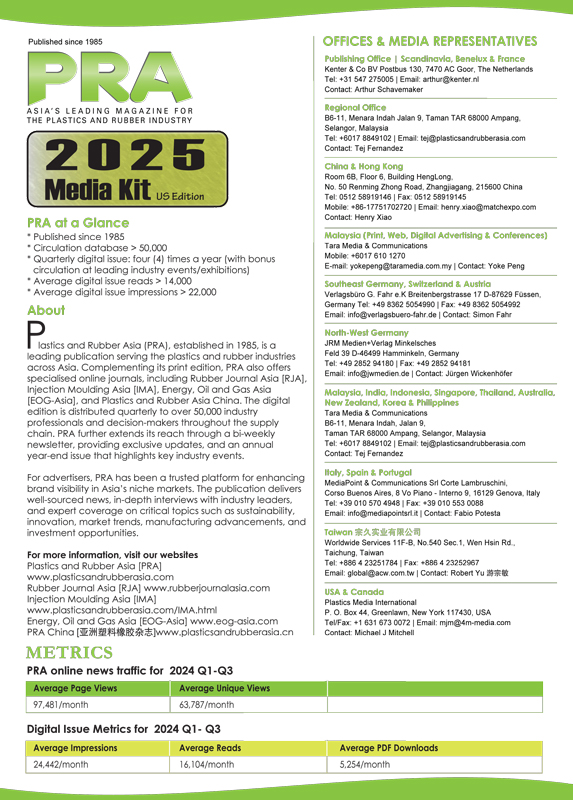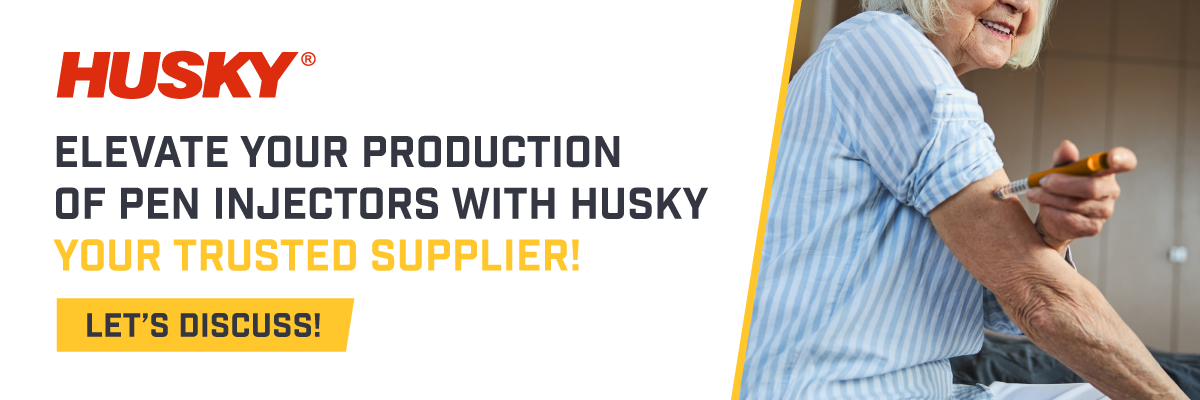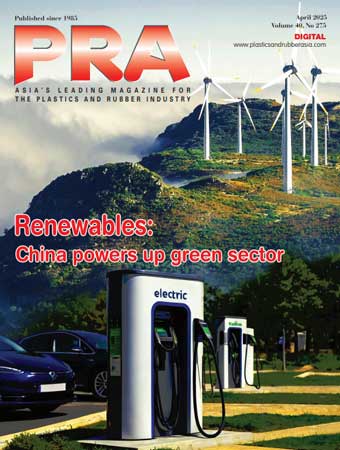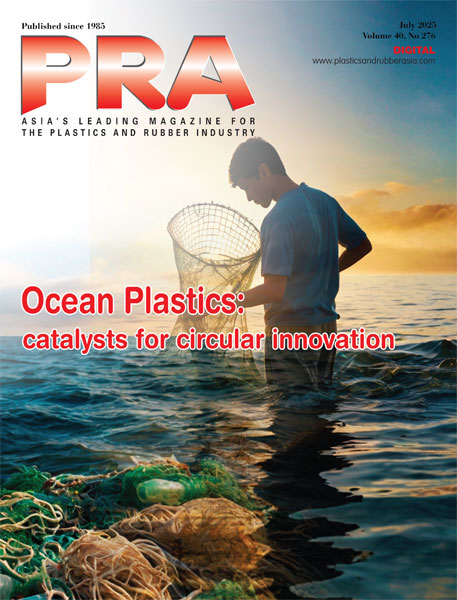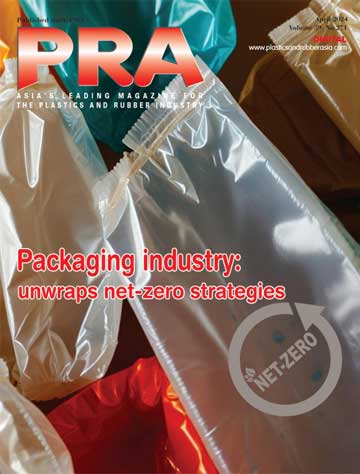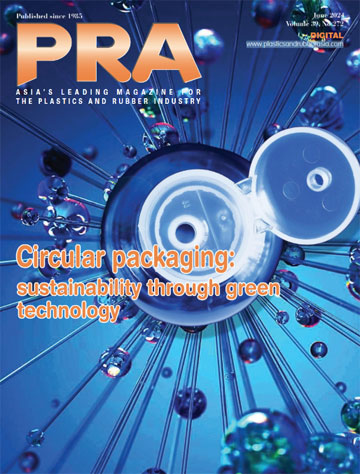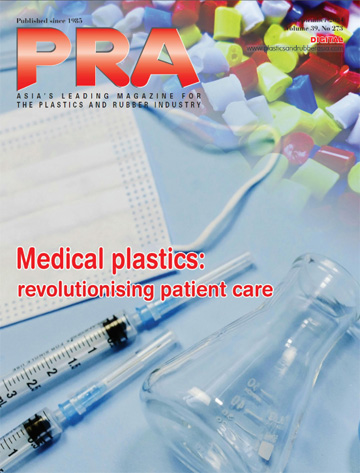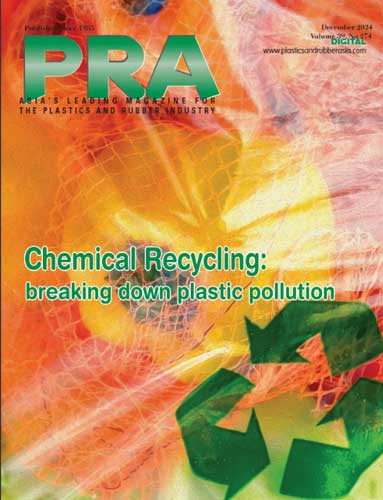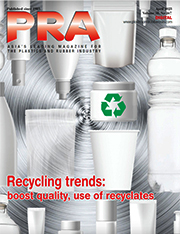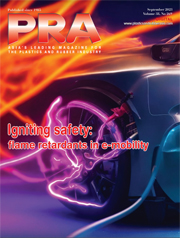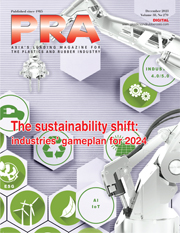K2025: Engel’s vertical machine for LSR-encapsulated fuel cell components
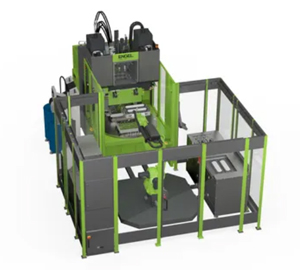
At K 2025, Austrian machinery maker Engel is showcasing what it says is a highly automated production cell in which gas diffusion layers (GDLs) for fuel cells are encapsulated with a liquid silicone rubber (LSR) seal. This application serves as a prime example of how sensitive functional elements made of film material can be overmoulded with LSR economically, safely and precisely thanks to highly precise process control – a key process for series production in the field of hydrogen mobility, it adds.
The GDL foils are integral components of fuel cells, ensuring the even distribution of reaction gases across the catalyst layer while also conducting electrons and draining water. To fulfil this role, they must be sealed with absolute precision without impairing their diffusion function. This places the highest demands on the precision of the moulding process, the interplay between mould, machine and automation, as well as on the economic efficiency of production – in other words, maximum quality at the highest possible output.
The core element of this solution is a vertical Engel insert 150 injection moulding machine with 1,500 kN clamping force and an integrated rotary table. This setup enables simultaneous injection and demoulding, nearly doubling the output with a cycle time of 50 seconds.
Moulding is carried out by the innovative 2-cavity mould concept from ACH Solution. Equipped with the ACH Servoshot 2G and its electric nozzle control, it ensures maximum process reliability and consistently high part quality, even with multiple injection points.
A fully integrated easix articulated robot from Engel handles all part manipulation, coordinating machine and automation movements with precision. In the first step, it removes the delicate GDL films from the feeding system and positions them precisely in the front station of the rotary table mould. After rotation, the injection process takes place in the rear station, where the films are partially overmoulded with a precisely positioned, thin and highly accurate LSR seal. At the same time, finished parts are removed from the front station and new films inserted. An integrated camera inspection system then verifies the even wall thickness distribution of the LSR seal, ensuring the highest part quality.
The automation system and all peripheral components are fully integrated into the CC300 control unit of the injection moulding machine. The close coordination between the injection moulding process and robot movements ensures a smooth, fast and efficient production sequence.
The LSR material used is Elastosil LR 3003/30 from Wacker, dosed via an ACH Maximix 3G Pro system. This dosing system is particularly well suited for low shot weights – in this case 16.8 g – and ensures an exact mixing ratio and high process stability. It is also integrated into Engel’s CC300 control unit.
Thanks to volume regulation using Engel’s digital assistance system iQ weight control, the accuracy of the injection moulding process is further enhanced, and the part weight remains reliably constant. A particularly important requirement in this application is the even distribution of the seal without overmoulding or voids – requirements that are optimally met through the interaction of a high-precision injection moulding machine, digital solutions and strong partners.
In addition to its high precision, the vertical machine concept of the insert series offers the advantage of a compact design. The control cabinet is integrated directly into the machine, significantly reducing the footprint of the entire cell – a key benefit when automated production needs to be implemented within limited space.
With this application, Engel adds it demonstrates how precision and short cycle times can be combined. Injection moulding machine, mould and automation are supplied from a single source and are perfectly coordinated.
The presented solution for overmoulding with thin LSR layers on a small surface area is highly cost-effective and can be easily integrated into existing production concepts. Digitalisation, flexible automation and stable processes make it a future-proof option for fuel cell systems.
Subscribe to Get the Latest Updates from IMA Please click here
©2025 Injection Moulding Asia. All rights reserved.
